- News
- Reviews
- Bikes
- Accessories
- Accessories - misc
- Computer mounts
- Bags
- Bar ends
- Bike bags & cases
- Bottle cages
- Bottles
- Cameras
- Car racks
- Child seats
- Computers
- Glasses
- GPS units
- Helmets
- Lights - front
- Lights - rear
- Lights - sets
- Locks
- Mirrors
- Mudguards
- Racks
- Pumps & CO2 inflators
- Puncture kits
- Reflectives
- Smart watches
- Stands and racks
- Trailers
- Clothing
- Components
- Bar tape & grips
- Bottom brackets
- Brake & gear cables
- Brake & STI levers
- Brake pads & spares
- Brakes
- Cassettes & freewheels
- Chains
- Chainsets & chainrings
- Derailleurs - front
- Derailleurs - rear
- Forks
- Gear levers & shifters
- Groupsets
- Handlebars & extensions
- Headsets
- Hubs
- Inner tubes
- Pedals
- Quick releases & skewers
- Saddles
- Seatposts
- Stems
- Wheels
- Tyres
- Health, fitness and nutrition
- Tools and workshop
- Miscellaneous
- Tubeless valves
- Buyers Guides
- Features
- Forum
- Recommends
- Podcast
review
£999.00
VERDICT:
Impressively fast, cutting-edge carbon wheels at a very impressive price point
Fast
Stable
Very innovative considering the price point
There are even more affordable carbon wheelsets out there
Weight:
1,520g
Contact:
At road.cc every product is thoroughly tested for as long as it takes to get a proper insight into how well it works. Our reviewers are experienced cyclists that we trust to be objective. While we strive to ensure that opinions expressed are backed up by facts, reviews are by their nature an informed opinion, not a definitive verdict. We don't intentionally try to break anything (except locks) but we do try to look for weak points in any design. The overall score is not just an average of the other scores: it reflects both a product's function and value – with value determined by how a product compares with items of similar spec, quality, and price.
What the road.cc scores meanGood scores are more common than bad, because fortunately good products are more common than bad.
- Exceptional
- Excellent
- Very Good
- Good
- Quite good
- Average
- Not so good
- Poor
- Bad
- Appalling
The Strade is the first wheelset from Parcours that has been designed fully in-house, and it's a very impressive one. They handle well in all conditions, the aero data seems to stack up, and they're bang on trend by being disc brake only, tubeless-ready and optimised for 28mm tyres. For their sub-£1,000 price tag, I couldn't really have asked for more from them over the test period.
While many carbon wheels you'll find for under a grand will use a rim profile that is widely available for any company to use and badge up as their own (known as open mould), the Strade was the result of a year-long research and development project in partnership with Nottingham Trent University, involving CFD analysis and extensive wind tunnel testing.
Parcours set out to offer an aero wheelset that would offer plenty of comfort as well as speed, and led by its analysis of real-world conditions and the impact of yaw angles on the ride, it arrived at a front and rear wheel that are different depths and rim profiles.
Parcours found it's the front wheel that takes most of the impact from crosswinds that can affect handling, therefore it made the rim U-shaped to deal with the higher yaw angles, with a conservative depth of 49mm. As the rear wheel is less exposed, this allowed for a deeper 54mm rim with a more old school, sharp V-shaped profile, which is better suited to low yaw angles.
Parcours tested the Strade in the wind tunnel against its existing 56mm deep Passista Disc wheelset, using a set of Fulcrum Racing 5 wheels as a baseline, and found the Strade outperformed the Passista across the board: over a distance of 40km, Parcours claims the Strade will make a 58-second saving against the baseline with 28mm tubeless tyres, compared to a 37-second saving for the Passista. The Strade even outperformed the Passista with 25mm tyres by a couple of seconds, and analysis of the handling performance showed the Strade's front wheel had a 15% reduction in sideforce impact compared to the Passista.
While it would have been nice to see a test against a similar aero wheelset from a competitor, Parcours insists that this would always be open to criticism because testing procedures differ between brands. Even so, it's so confident that the Strade is the real deal it felt it was no longer possible to recommend the Passista Disc wheelset in any circumstance, so discontinued it straight away when the Strade went on sale.
If you want to see Parcours' testing for yourself, it's published the full details of the Strade's development along with wind tunnel results here.
All about the width
The other main objective was to make the Strade as wide as possible, while staying within current guidelines laid out by the European Tyre and Rim Technical Organisation on maximum width for running a 25mm tyre. This, says Parcours, is because some riders may still run 25s out of habit, so it wouldn't currently make sense to make a wheelset that couldn't run 25mm tyres safely when they're still the most common road bike tyre width. (You can't run 23s, if you wanted any more evidence that skinny rubber has been consigned to history.)
> Why you need to switch to wider tyres
This maximum allowable width turned out to be 22.5mm internally for both wheels, with a 32mm outer rim width on the front and 30.5mm on the rear. The Strade is optimised for a 28mm tyre, and Parcours says that a 28mm Continental GP5000TL (its base tyre for all its aero testing) will have an 'implied' measured width of 30.3mm on the rim.
Build
The wheels arrived with rim tape provided and a freehub spacer for 8, 9 or 10-speed cassettes. They weighed in at 1,520g for the pair, so not the lightest set of wheels on the market around this depth, but certainly not heavy either. Parcours promises smooth running in all weathers from the machined alloy hubs with EZO cartridge bearings and a Centerlock disc fitment, and, as with pretty much all road disc brake wheelsets nowadays, they're fitted for 12mm thru-axles out of the box (adapter kits are available for other axle standards).
Parcours has selected tried and tested Sapim CX-Ray aero spokes front and rear, in a 24-spoke 2-cross pattern to ensure strength and longevity as well as speed. The blacked out decals look stealthy and cool in my opinion, and will match with anything, but Parcours offers customised options if you want a flash of colour.
Warranty
Should you encounter any problems, Parcours doesn't really go wildly above and beyond when it comes to warranty and crash replacement, but it's all fair and square. The Strade wheelset comes with the standard-fare full two-year manufacturer's warranty should anything be faulty, and in the event of a crash, it offers a 'substantial discount' on any replacement rims, and wholesale pricing for replacement parts.
Tyre fitting
I used Continental GP5000TL tyres set up tubeless throughout the test period. As this was Parcours' tyre of choice for its development phase I expected fitting to be pretty fuss-free... which was mostly the case, with a lever only required to get the last little bit of tyre snapped onto the rim for each wheel.
I wasn't able to blow them up first time with a regular track pump (which might be possible with some tyre combos), so used an air blaster initially. I started my rides with the pressure between 70-80psi throughout the test period.
On-road performance
Out on the road, the stability was evident straight away and I was really impressed with their performance in crosswinds. It seems like we've had a particularly blustery spring and summer this year, and I felt completely confident running the Strade wheels no matter what the weather was doing, not once sensing that handling was compromised.
They're also impressively stiff with little to no flex evident on my bumpy regular training routes, even out of the saddle. The 28mm tyres that blow up to around 30mm on the wide rims will help greatly of course, but the wheels seemed to offer plenty of comfort to take the edge off dodgy road surfaces too. This became even more apparent when I sadly had to give them back, and swapped to another similarly priced mid-depth carbon wheelset with 25mm tyres on my Specialized Tarmac test bike; the difference in comfort was evident straight away, and the Strade also felt much smoother in my opinion.
> Buyer’s Guide: 20 of the best disc brake road wheelsets
I was pleased to find that the freehub has a nice whooshing sound, not too intimidating but folk will definitely know you're there. The EZO bearings engage quickly and proved durable and smooth throughout my lengthy test period. Parcours offers a Kogel ceramic bearing upgrade for £275, but for me and 99 per cent of Parcours' customers, this luxury probably isn't going to be necessary.
I can't prove anything with regards to Parcours' aero claims through my own testing on the road, but I can confidently report that my average speeds went up compared with my training wheels. Of all the race wheels I've tried over the years, the Strades are probably the most balanced I've used to date; they offer plenty of free speed compared with bog standard wheels, plus enough comfort, strength and crosswind stability that would make me consider ditching training wheels altogether. I'd rather use these year-round for a faster commute!
Value
In terms of value, the Strade wheels are among the most affordable aero wheels out there unless you buy direct from the Far East, but there are some highly recommended options that are even more wallet-friendly.
Hunt's 4050 Carbon Aero Disc wheelset received a glowing road.cc review back in July, and they're considerably cheaper at £819 and a bit lighter (1,472g a pair), though the depth is 40mm on the front and 50mm rear, so the Strade's deeper profile could potentially offer more aero benefit.
Zipp also now offers a carbon wheelset, the 303S, at a surprising £985, but they are shallower still, and only compatible with tubeless-ready tyres.
At the other end of the scale, Vision's Metron 55 SL Discs are £1,699.95.
Conclusion
I was really pleased with how the Strade wheels performed, and the R+D that has gone into them is impressive for a relatively new brand. The only reason the score isn't perfect is because there are similar carbon wheelsets from competitors that are more affordable still, although it could be argued that Parcours' Strade project is more exhaustive than any that have come before it for a sub-£1,000 carbon wheelset; and it shows in the performance on the road.
Verdict
Impressively fast, cutting-edge carbon wheels at a very impressive price point
road.cc test report
Make and model: Parcours Strade wheelset
Size tested: 700C
Tell us what the wheel is for and who it's aimed at. What do the manufacturers say about it? How does that compare to your own feelings about it?
Parcours says: "The Strade is our newest all-road wheelset. Aerodynamically-optimised around a 28mm tyre, it features a differential front/rear rim profile to deliver stable handling and outright speed."
I found this description to be bang on the money: they worked best with a 28mm tubeless tyre, they're impressively fast and handled perfectly over my test period.
Tell us some more about the technical aspects of the wheel?
Parcours lists:
Weight front: 690g
Weight rear: 830g
Sapim CX-Ray spokes, 24 front and 24 rear
Depth front: 49mm
Depth rear: 54mm
Rim width front: 32mm
Rim width rear: 30.5mm
Internal rim width (both wheels): 22.5mm
Rim tape fitted
Freehub spacer for 8/9/10 speed cassettes supplied
Rate the wheel for quality of construction:
9/10
They've got all the parts that add up to a smooth-running, fast, modern carbon wheelset, including EZO bearings, quality Sapim CX-Ray spokes and 12mm thru-axles front and rear. The differing profiles of the front and rear show Parcours has thought carefully about optimising the construction, and the results are impressive.
Rate the wheel for performance:
9/10
They're just the right depth to handle very well in crosswinds, and I can't say I found them any more difficult to handle than training wheels. They also felt impressively stiff and the acceleration is on a par with many high-end wheelsets I've tried.
Rate the wheel for durability:
8/10
No issues with spokes etc over the test period; no signs that they're not durable.
Rate the wheel for weight
8/10
There are lighter carbon race wheels out there, but not many for under £1k.
Rate the wheel for value:
8/10
More affordable than most carbon race wheels – Vision's Metron 55 SL Discs are £1,699.95 – although Hunt's 4050 Carbon Aero Disc wheelset are less at £819.... Under £1,000 for wheels that offer this much performance is impressive.
Did the wheels stay true? Any issues with spoke tension?
They stayed true, and no spoke tension issues over the test period.
How easy did you find it to fit tyres?
No tubeless tyre installation is completely plain sailing, but I didn't really encounter any problems.
How did the wheel extras (eg skewers and rim tape) perform?
No issues.
Tell us how the wheel performed overall when used for its designed purpose
Almost ideal: they're fast, stable and work best with 28mm tubeless tyres as described.
Tell us what you particularly liked about the wheel
The stability, the smoothness and the pleasing sound from the freehub... not too deafening but it makes your presence known.
Tell us what you particularly disliked about the wheel
There's nothing really to dislike.
How does the price compare to that of similar products in the market, including ones recently tested on road.cc?
More affordable than most carbon race wheels, although Hunt's 4050 Carbon Aero Disc wheelset are less at £819. There's also now a pair of Zipp wheels that come in at £985 – the 303S – although these are only compatible with tubeless-ready tyres.
Did you enjoy using the wheel? Yes
Would you consider buying the wheel? Yes
Would you recommend the wheel to a friend? Yes
Use this box to explain your overall score
I was impressed with the Strade wheels; plenty of work has gone into Parcours' first ground-up wheel project. There are some wheelsets around scored highly by road.cc reviewers that are even more affordable, so the score isn't quite 10/10.
About the tester
Age: 27
I usually ride: Road bike (currently Specialized Tarmac) My best bike is: Ridley Chronus TT bike
I've been riding for: Under 5 years I ride: Every day I would class myself as: Experienced
I regularly do the following types of riding: road racing, time trialling, commuting, club rides, sportives, general fitness riding, Triathlon races
Jack has been writing about cycling and multisport for over a decade, arriving at road.cc via 220 Triathlon Magazine in 2017. He worked across all areas of the website including tech, news and video, and also contributed to eBikeTips before being named Editor of road.cc in 2021 (much to his surprise). Jack has been hooked on cycling since his student days, and currently has a Trek 1.2 for winter riding, a beloved Bickerton folding bike for getting around town and an extra beloved custom Ridley Helium SLX for fantasising about going fast in his stable. Jack has never won a bike race, but does have a master's degree in print journalism and two Guinness World Records for pogo sticking (it's a long story).
Latest Comments
- mark1a 4 sec ago
I can highly recommend Argos (not the shop), rather Argos Racing Cycles in Bristol, I couldn't be more happy with the restoration frameset they...
- wtjs 5 min 8 sec ago
I don't need proof! Faith has shown me the True Path from which there must be no deviation
- S.E. 6 min 44 sec ago
Better tyres, but weirdly enough almost no snow on this mountain.
- wtjs 11 min 34 sec ago
BMW, Audi, GTI etc. drivers are immune to sob stories about dead cyclists and children.
- mikeyboy247 17 min 32 sec ago
TNT Thats explosive! Have to ride my bike now! instead of watching it, Thanks WBD for getting me fitter.
- S.E. 30 min 46 sec ago
You need to take wind chill/effect into account... at TT's speeds pouring water is certainly highly effective!
- pete666 43 min 29 sec ago
"89. Eighty nine years old and still allowed behind the wheel of a multi tonne weapon. Absolutely mad."...
- Steve Garratt 59 min 15 sec ago
Agree 100% regarding riding round that circuit at 5.30am. I don't own an £8000 bike, but even on one of my £1500 to £3500 bikes, I would now be...
- mdavidford 1 hour 12 min ago
Yeah, but all those guys have got an asterisk against them, so they don't count...
- Pub bike 1 hour 9 min ago
The above procedure didn't work for me so I had to do the full (very) hard reset procedure here under the "Unprompted Reset" heading at the end of...






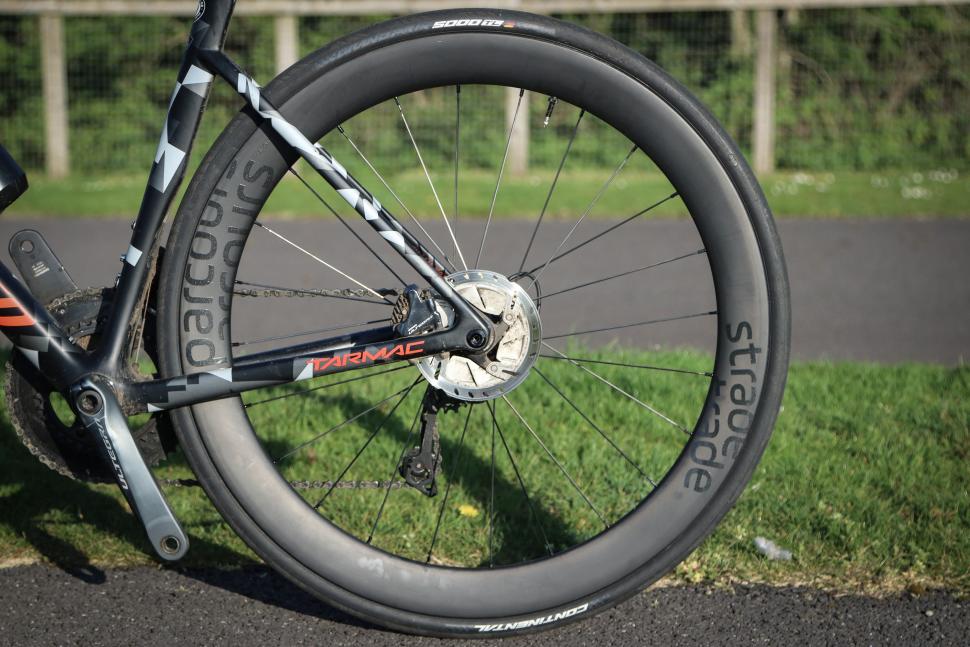
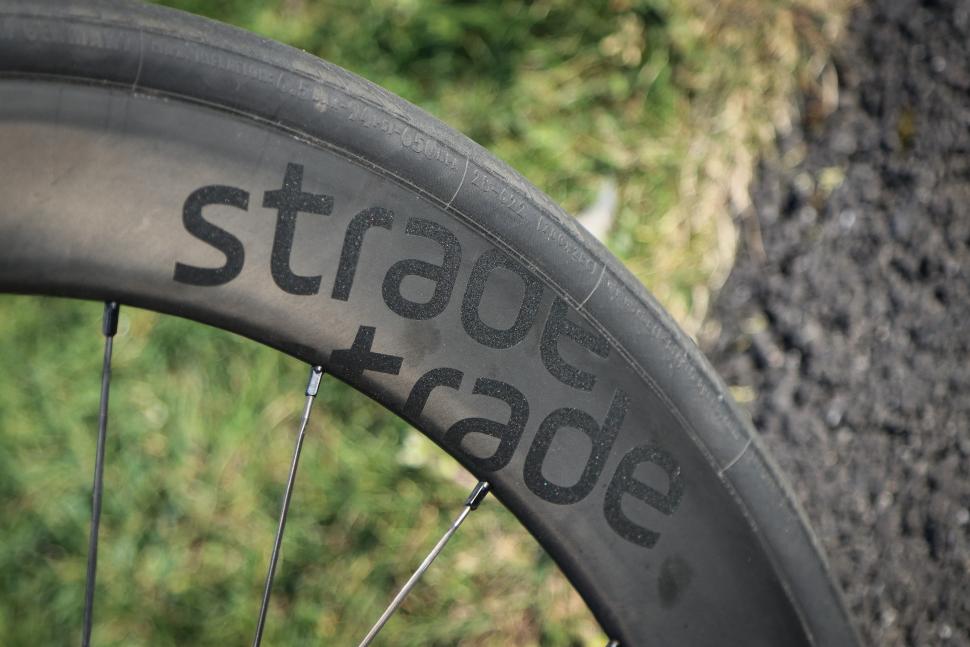
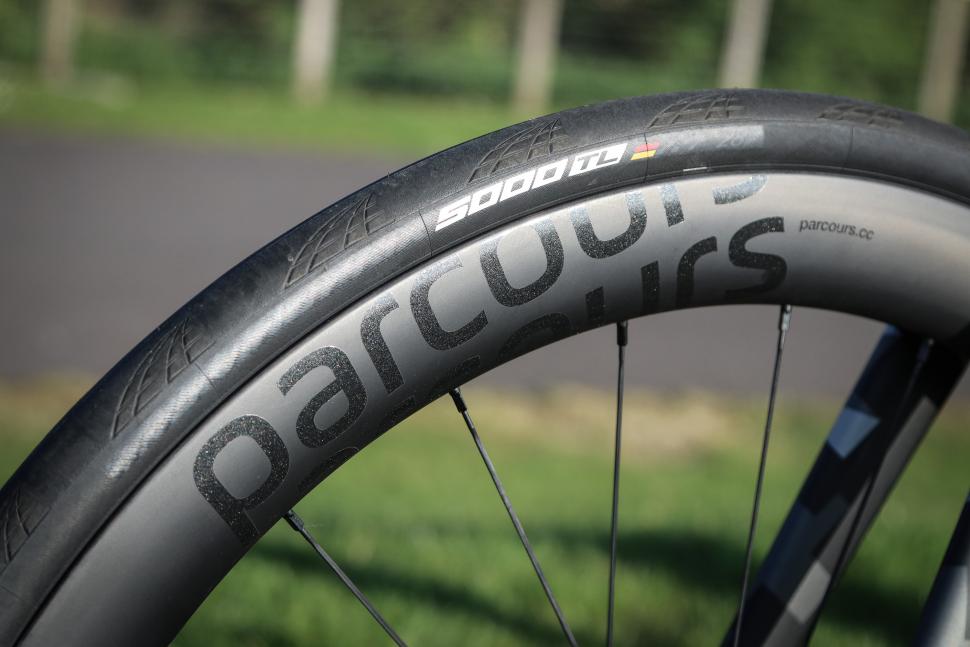
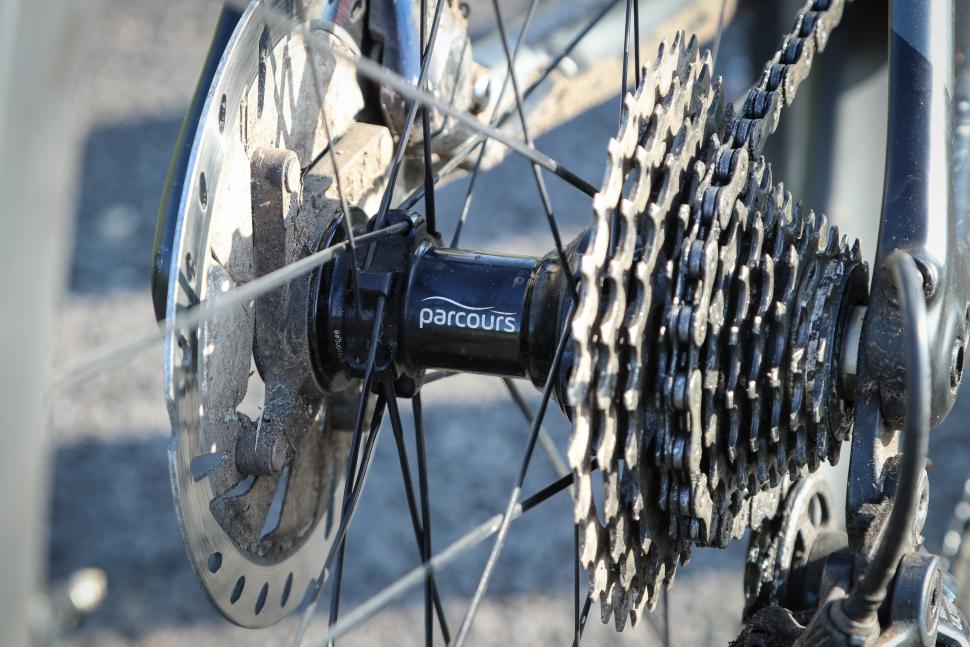
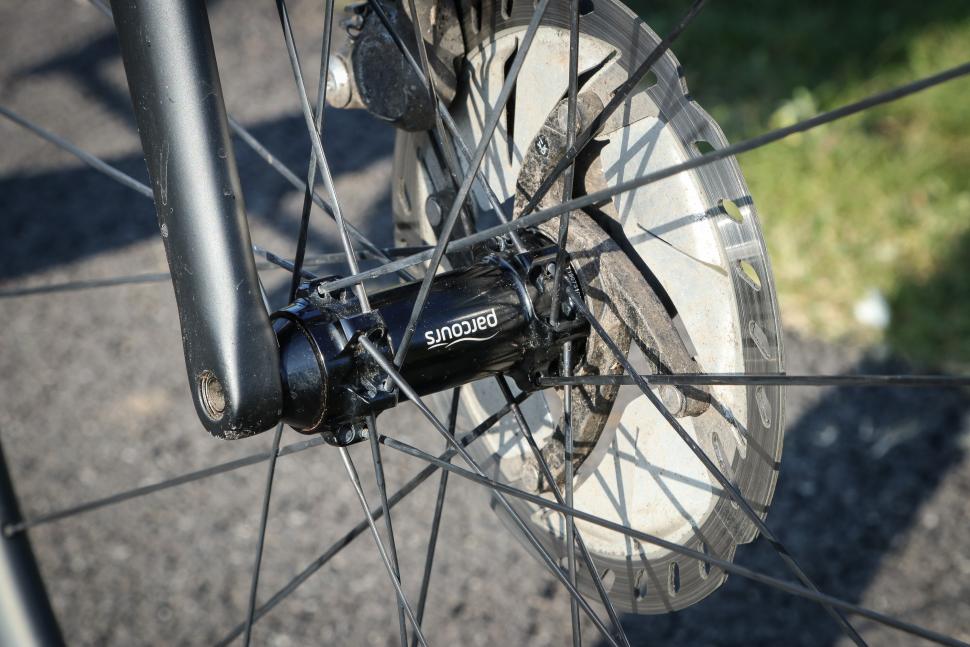
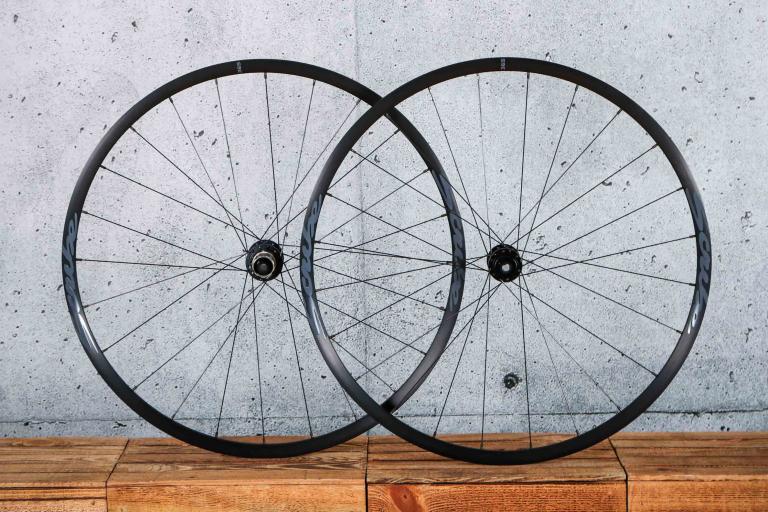
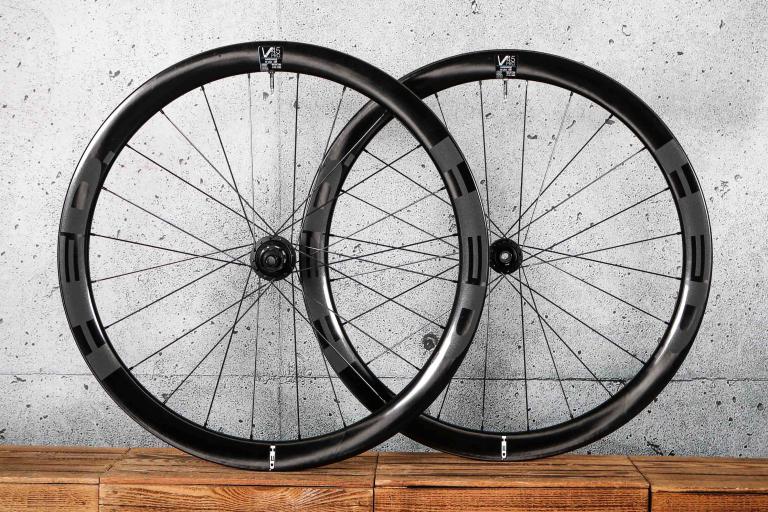
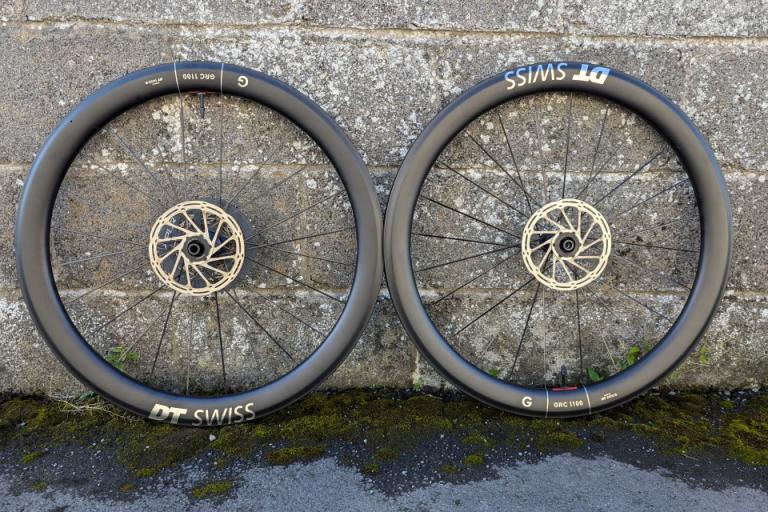
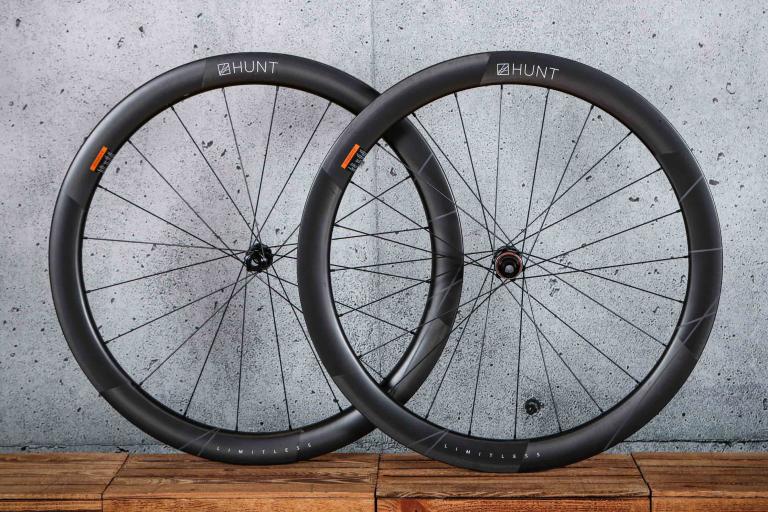
Add new comment
16 comments
What does that actually mean?
I like the sound of these wheels and indeed Roval have gone the same way with their new Rapide CLX wheels - u shaped front, v shaped rear, wider rim (35mm wide front!), deeper rear etc. What I'd like to now is how the performance of the Strade compares with the 'big brands'? Alot of reviews compare wheelsets by price segment but I'd be interested in how they compare overall...
The internal rim width of 22.5mm suggests wider tyres may be used with this wheelset, besides the 28mm suggested width for making the most out of the aero design.
Wider tyres might lose some of the aero efficiency, but be suitable for gravel riding. Which would make such wheels even more versatile with just a quick tyre swop.
Quick as in "with tubes", I don't know how quick it would be with a tubeless setup.
PS: are these hookless rims? Some tyre manufacturers suggest hooked rims work best with their TC tyres, others leave it open.
Hi JF69, to confirm the Strade has a hooked rim. This allows the use of a far wider choice of tyre, tubeless-ready or standard clincher.
We absolutely agree that with the wide internal rim width, these wheels can be used with wider tyres, albeit with an aero penalty versus a 28mm tyre.
I'd like to hear more about the hub performance on wheelset reviews. Which is where an awful lot of the 'money goes' in the scheme of things. We all know that wheels are getting wider, that the wheel tyre interface is key for aero efficiency and that they all claim to be good in the wind.. but hubs seem to be one of those grey area's which seem to be dictated by price alone.
e.g. Novatec hubs are less than £100, Tune are over £400 and Chris Kings are over £700.
Can somebody please explain this sentence... not aimed at Parcours particularly, as other manufacturers say similar things.
"tested at a speed of 40km/h, the Strade made a 58-second saving against the baseline with 28mm tubeless tyres, compared to a 37-second saving for the Passista."
Surely at 40km/h on the different wheelsets, the time taken to cover a given distance will be the same? Or are they saying it will take 58 secs less to cover 40km on the fancy ones in which case that's 40.6km/h not 40km/h?
If you follow the link at the end of that paragraph I think it's explained slightly better (and indeed would appear to make Road.cc's reporting slightly inaccurate) - although still far from being entirely transparent! The claim on the Parcours website appears to be that it would save 58s over a 40km distance.
Hi - just to explain this one, the comment above is correct. The time savings are based on a rider covering a distance of 40km, not at 40kph. We use the "time saved over 40km" metric that was first used by Specialized as it actually removes rider speed from the equation.
Hope that's clear but happy to explain in more detail!
@parcours- Cheers, all making more sense now!
Have added a correction here, apologies for the confusion!
Testing will be done at a fixed air speed and in this case it appears that speed is 40kmh. There will be some drag force measured, which at that speed can be converted to some power difference at the test speed. Typically, when aero testing you derive the CdA from this data, and if you know or can measure the frontal area you can get down to just the Cd (Coefficient of drag).
Where something like a wheelset is a bit different to perhaps a car, or bike and rider (or basically a complete system), is that it's impossible to extract the drag component that only the wheelset contributes. You can test the wheels on their own but if you take the wheels out of a bike and rider system, it would fundamentally change the flow in the system. (like aero testing a car without the windshield, and testing the windshield separately to get data about the whole car would be pointless).
When comparing drag at difference speeds, it's assumed that the system has a drag force that increases with the speed squared (from basic drag equation), that means that power increases with the speed cubed (becuase power is proportional to force x speed). If the two speeds are pretty close like 40kmh vs say 30kmh that's a pretty good assumption. When testing something with very low drag like a wheel or even bike and rider (low compared to a car at 100kmh) it's good to measure as high a value as possible to help improve accuracy. It's mainly for this reason that bike industry aero tests are carried out at something like 40kmh and calculated/estimated down to lower speeds of interest. The results will be probably be as/more accurate than those obtained by simply testing at 25kmh, and much more accurate when applying them to 50-60kmh that pros will be interested in.
As an aside if the speeds are very different, it's not a safe assumption, testing at 40kmh might give a significantly different coefficient of drag to 100kmh, as the flow regime can be very different. Attempts to quantify this change typically employ the reynolds number, which is in basic terms, a measure of the ratio of turbulent to laminar flow (wikipedia if you like). This is why you might see skinsuits in particular advetised as being better for higher or lower speeds.
So you end up with two tests at a representive reference speed, and a difference in drag for each so you can calculate EITHER the power difference for each system at the same speed (our product A saves you B watts) OR the the difference in speed for the same power (our product X saves you Y seconds over 40km). But even this second case will will depend on the baseline drag of the system.
Bottom line is that if you have some data that shows a saving in watts at a speed, you can turn that into something useful for yourself by using:
Watt saving at desired speed = Watt saving at reference speed * (desired speed / ref speed)^3
And then factor that power saving into your own power numbers.
For the avoidance of any confusion, all of our wind tunnel testing is conducted at 48kph (30mph). This is the standard used by the A2 Wind Tunnel where we test. As you say, the reason why testing is conducted at a higher wind speed than most riders will achieve is that, given drag force is proportional to the square of wind velocity, you will get much higher data resolution at these speeds. This enables us to pick up much smaller differences between tests, that would otherwise be within the margin of error of the wind tunnel's sensor package.
Thanks for the detail. It's good to see companies doing quality testing.
@pavlo - Thanks for the detailed reply - very interesting and much appreciated.
You can get all the tech details you like, but I'm a "look at the pictures" type and it's clear from this article's images that you don't even need to bother with pedals if you have these wheels. I've already asked Santa for them.
Great to see another company investing in design and development at a good price. They look smart and let's be honest that's all that matters to most of us as 40kph/25 mph average is unobtainable to most. I'm really interested to see where the market goes as wheels like these would have been much more expensive even 5 years ago. With a lot of manufactures starting to go hookless can we see the prices dropping Futher over the next few years.